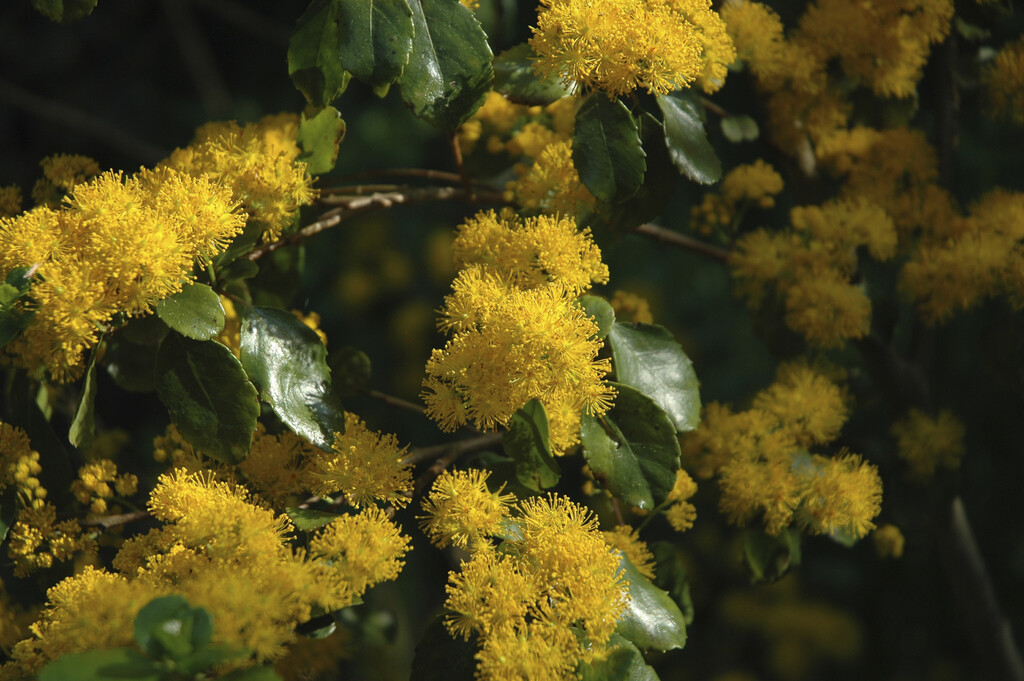Azara dentata
toothed azara
A medium sized evergreen shrub with smallish, rigid, oval leaves with serrated edges that are green above and densely grey-felted beneath. The flowers appear in mid summer on new shoots in clusters and are globular, small, and yellow-green to mustard yellow as they mature. They are strongly fragrant, and have no showy petals but conspicuous long, brightly colored, stamens, so look like mini spiky pom-poms. The fruit is a red-black berry approximately 3–10 mm diameter.
Size
Ultimate height
4–8 metresTime to ultimate height
10–20 yearsUltimate spread
2.5–4 metresGrowing conditions
Moisture
Moist but well–drained, Well–drainedpH
Acid, Alkaline, NeutralColour & scent
| Stem | Flower | Foliage | Fruit | |
| Spring | Green Grey Silver | |||
|---|---|---|---|---|
| Summer | Green Yellow | Green Grey Silver | ||
| Autumn | Green Grey Silver | Black Red | ||
| Winter | Green Grey Silver |
Position
- Full sun
- Partial shade
Aspect
South–facing or West–facing or East–facing
Exposure
Sheltered Hardiness
H4Botanical details
- Family
- Salicaceae
- Native to GB / Ireland
- No
- Foliage
- Evergreen
- Habit
- Bushy
- Genus
Azara are evergreen shrubs or small trees with simple leaves, often in unequal pairs, and very small, fragrant yellow flowers with prominent stamens in clusters or spikes from the leaf axils, occasionally followed by white or pale purple berries
- Name status
Correct
How to grow
Cultivation
Grow in a warm sheltered position in sun or partial shade in deep, humus-rich soil. Flowers more freely when grown against a south- or south-west-facing wall than in the open. Protect from very cold, drying winds.
Propagation
Propagate from semi-hardwood cuttings or by layering.
Suggested planting locations and garden types
- Mediterranean climate plants
- Sub-tropical
- City and courtyard gardens
- Cottage and informal garden
- Low Maintenance
- Wall side borders
Pruning
Pruning group 8, or pruning group 13 if wall-trained.
Pests
Generally pest-free
Diseases
May be susceptible to honey fungus in gardens where it is present but insufficient data to determine degree of susceptibility
Get involved
The Royal Horticultural Society is the UK’s leading gardening charity. We aim to enrich everyone’s life through plants, and make the UK a greener and more beautiful place.
